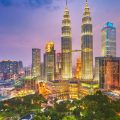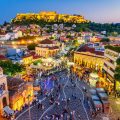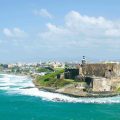Mexico City is the capital of Mexico and the most populous city in North America. It is one of the most important cultural and financial centres in the world, and it is home to the largest number of Mexicans. The city has a long history, dating back to the founding of the Aztec Empire in 1325. Today, Mexico City is a major metropolis, with a population of over 21 million people.
The city is located in the Valley of Mexico, whch is surrounded by mountains and volcanoes. The climate is warm and temperate, with average temperatures ranging from 18 to 25 degrees Celsius. Mexico City experiences a wet season from May to October, and a dry season from November to April.
The economy of Mexico City is based on service industries, manufacturing, tourism, and oil production. The city attracts over 20 million tourists each year, making it one of the most popular tourist destinations in the world. Major landmarks include the Palacio Nacional, the Catedral Metropolitana, Chapultepec Park, and the Basílica de Guadalupe.
What Are 3 Facts About Mexico City?
1. Mexico City is sinking evry year.
2. Mexico City has the largest number of museums in the world.
3. Mexico City was once called “The City of Palaces”
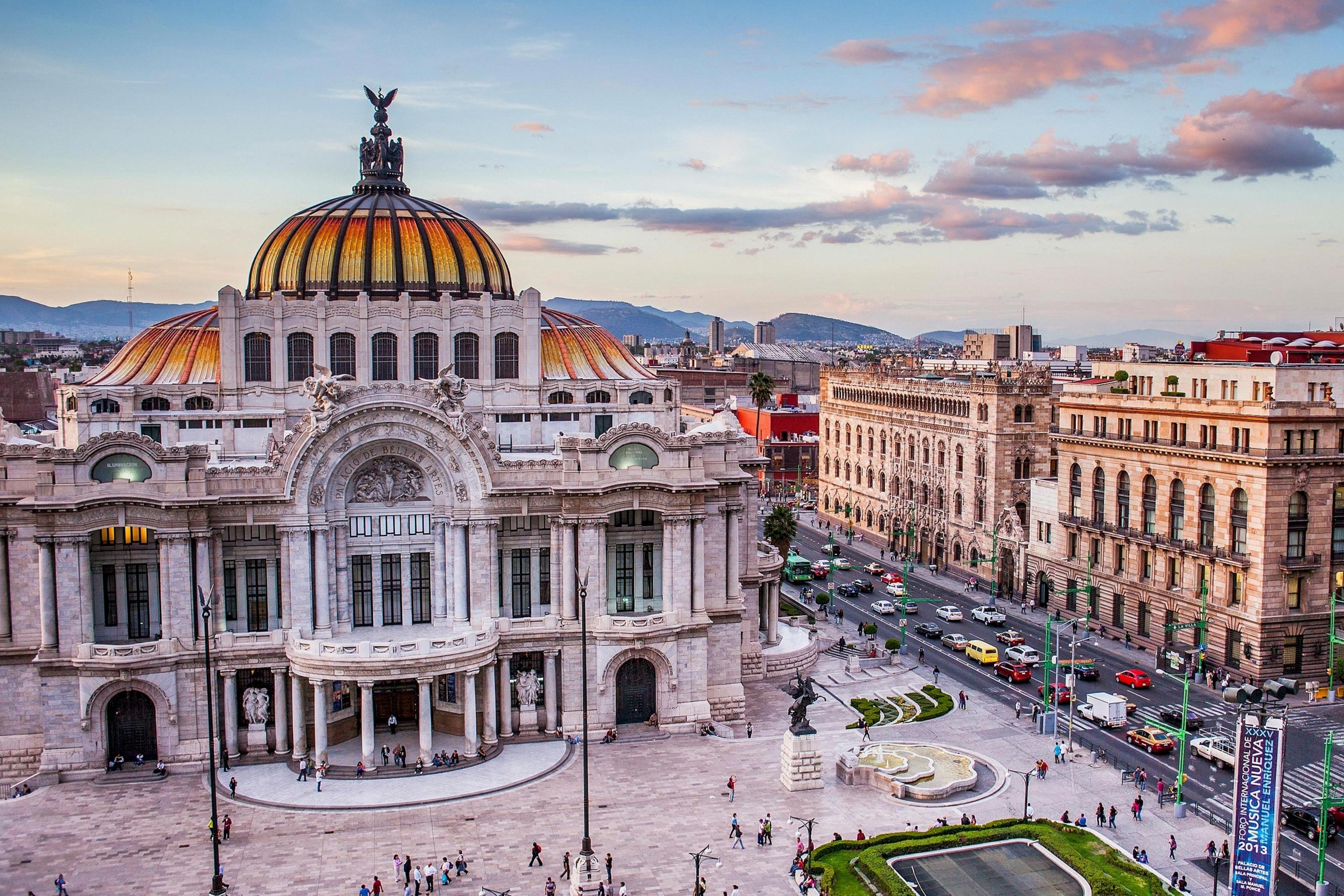
What Is A Fact About Mexico City?
Mexico City is the capital of Mexico and it is also the largest city in North America. The city was founded in 1325 and it is located in the Valley of Mexico. The population of the city is over 21 million people.
What Is Mexico City Known For?
Mexico City is most known for its colonial architecture, iconic artwork, spicy cuisine, and rich cultural heritage. These are all things that make the city unique and worth visiting.
Colonial architecture can be seen throghout Mexico City, from the grandiose buildings of the main square to the more modest homes in the surrounding neighborhoods. Iconic artwork can be found in many of the city’s museums, including the Frida Kahlo Museum and the National Museum of Anthropology. The city’s cuisine is renowned for its spice and variety, with many different dishes to choose from. And finally, Mexico City’s cultural heritage is on display in its many festivals and events, which celebrate the city’s history and traditions.
What Are 5 Interesting Facts About México?
1. Mexico is home to the world’s largest pyramid.
2. 69 different languages are spoken in Mexico.
3. Mexico City is the second city of the world with the largest number of museums.
4. Mexico is the country with the largest number of taxi cabs in the world.
5. Mexico is a big time Coca-Cola consumer.
How Did Mexico City Get Its Name?
According to legend, the Aztecs believed they were destined to settle at the spot where they saw an eagle sitting atop a cactus eating a snake; witnessing this scene on a small island in Lake Texcoco, they built the city of Tenochtitlán where Mexico City stands today. The name “Mexico” is derived from the Nahuatl word for the Aztec capital, Mexico-Tenochtitlan. This was the site of the Mexican War of Independence in 1810 and became the capital of independent Mexico after the War of 1847.

What Was Mexico City First Called?
Mexico City was originally called Mexico Tenochtitlan. It was founded in 1325 by the Aztecs, and became the dominant city-state of the Aztec Triple Alliance in 1430. The Triple Alliance was formed by Tenochtitlan, Texcoco, and Tlacopan.
Is Mexico City Built On A Lake?
Yes, Mexico City is built on a lake. The Aztecs founded the city of Tenochtitlan in 1325 on an island in Lake Texcoco. The Spanish conquistadors, led by Hernan Cortes, arrived in 1519 and began constructing Mexico City aong the ruins of the Aztec city. The Spanish drained Lake Texcoco, and much of modern Mexico City now sits in the lake basin.
What Is Mexico City’s Nickname?
Chilangolandia is the nickname for Mexico City. It is a play on words, as the word “chilango” is used to describe someone who is from Mexico City. The term is often used pejoratively by people living outside of Mexico City, as it connotes a loud, arrogant, ill-mannered, loutish person.
Is Mexico City Sinking?
Yes, Mexico City is sinking. The city is built on a giant aquifer, and as the aquifer is drained, the city is sinking downwards rapidly at twenty inches per year. Despite heavy flooding and rainfall, the city is facing a water shortage. In fact, more than 20 million residents don’t have enough water to drink for nearly half the year.
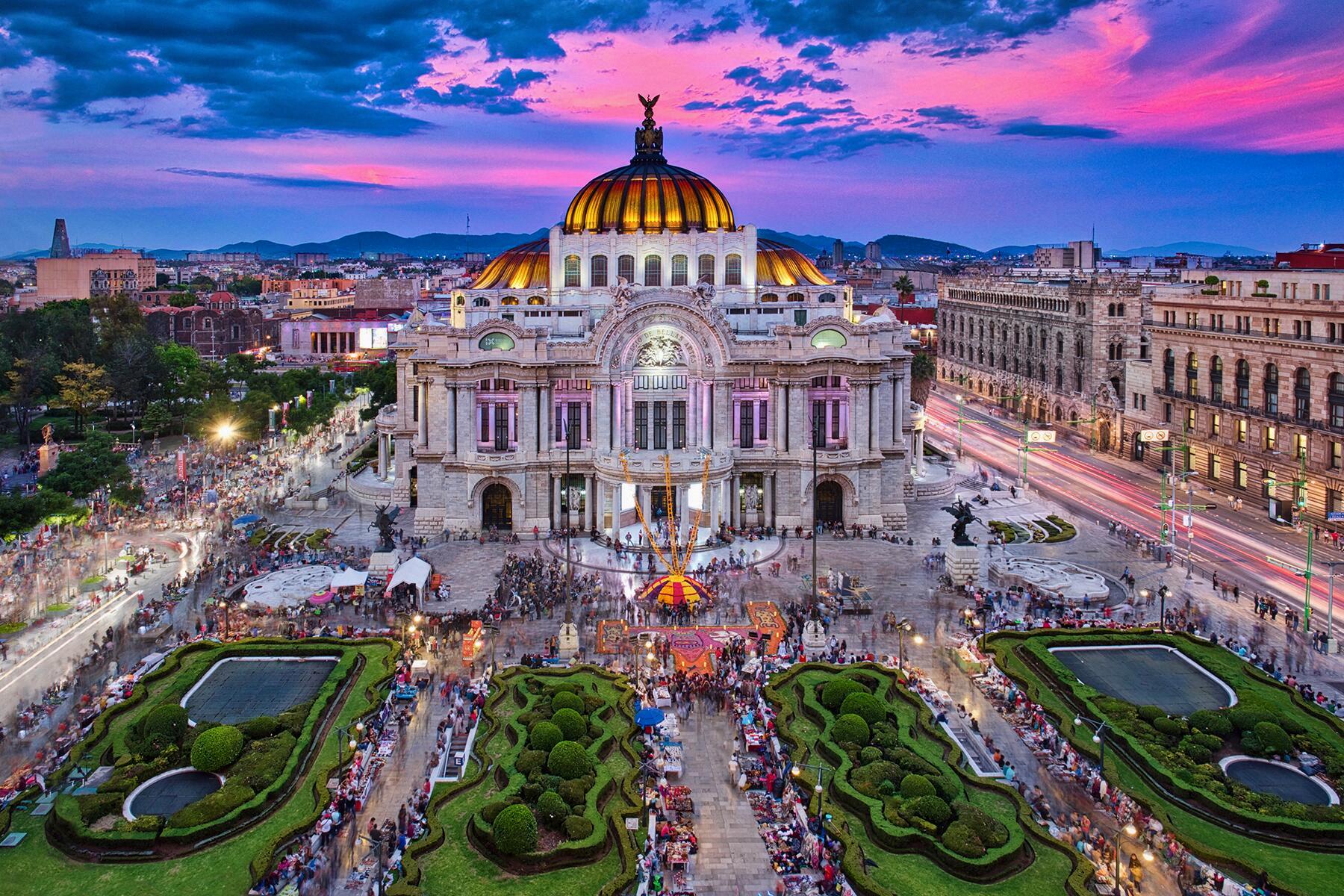
Is Mexico City The Largest City In The World?
No, Mexico City is not the largest city in the world. Tokyo is the largest city in the world, with a total population of over 37 million people. Mexico City is the secnd largest city in the world, with a total population of over 21 million people.
Why Is Mexico City So Cold?
Mexico City is located at a tropical latitude, but at a high altitude, which ranges beween 2,200 and 2,600 meters (7,200 and 8,500 ft) in the different districts, so it’s in the so-called tierras frías (“Cold Lands”). Here are the average temperatures measured at the international airport.
Why Is Mexico City Built On A Lake?
The answer to this question is actually quite complex, and it really depends on who you ask. Some people believe that the Aztecs chose to build their city on a lake becaue it was a strategic location that would allow them to defend against enemies. Others believe that the Aztecs simply built their city where they did because it was the only spot available. And still others believe that the Aztecs had a spiritual connection to the lake and believed that it was a sacred place. So, really, there is no one correct answer to this question.
How Many Cities Mexico Have?
Mexico has twelve cities with more than one million people, 121 cities with beween 100,000 and one million people, and 820 cities with between 10,000 and 100,000 people.

How Much Does Mexico City Sink Per Year?
Mexico City is sinking at rates of up to 50 cm per year due to groundwater extraction. If this subsidence continues, the city culd sink as much as 30 m over the next 150 years.
Groundwater extraction is not the only factor causing Mexico City to sink. The city is built on a lake bed, and as the water in the lake is used up, the sediments compact and cause the city to sink. In addition, the weight of the buildings and pavement causes the underlying soils to compress, which also contributes to subsidence.
Subsidence can cause a number of problems for a city. For example, it can damage buildings and infrastructure, and make flooding more likely. In Mexico City, subsidence has already caused some buildings to collapse.
There are some methods that can be used to mitigate subsidence, such as injecting water into the ground to replace what has been extracted, or using lighter materials for construction. However, these methods are expensive and may not be feasible for a city like Mexico City with a large population and limited resources.
What Is Mexico Real Name?
The formal name of the country is Estados Unidos Mexicanos, which is often translated as “United Mexican States” or “United States of Mexico.”
Who Built Mexico City?
The Aztecs built Mexico City on an artificial island in the Lago de Texcoco. The Spaniards later erected a secnd Mexico City atop the ruins of Tenochtitlán.
Why Did Mexico City Grow So Fast?
The main source of Mexico City’s rapid growth in the second half of the 21st century is due to domestic migration. The metropolitan population grew from 3.1 million in 1950 to 5.5 million in 1960 and spiked to 14 million by 1980. This was largely caused by people moving from rural areas to urban areas in search of beter economic opportunities. Additionally, the Mexican government’s policy of encouraging industrialization also contributed to the growth of Mexico City as it attracted businesses and workers from all over the country.

Is Mexico City The Oldest City In The World?
No, Mexico City is not the oldest city in the world. Jericho, wich is located in the Palestine Territories, is believed to be the oldest city in the world. Indeed, some of the earliest archeological evidence from the area dates back 11,000 years.
Is Mexico City Bigger Than New York?
Yes, Mexico City is bigger than New York. With a population of over 21 million people, it is the largest city in North America and the Western Hemisphere. It is also the most important political, cultural, educational and financial center of Mexico. New York, by contrast, has a population of just under 8.5 million people.
Does Mexico City Sit On A Volcano?
Yes, Mexico City sits on a volcano. It is situated on the Trans-Mexican Volcanic Belt, which contains some of the world’s largest volcanoes. One of these is Popocatepetl, which is only 70 kilometers southeast of the city. The other is Iztaccihuatl, which is connected to Popocatepetl by a high ridge. Both of these volcanoes are active, and there have been several eruptions in recent years.
Is Mexico City Dry?
The Mexico City Metropolitan Area has a semi-arid climate, with an average of only about 700mm of rainfall per year. However, the area does have a cool dry season from November to February, followed by a warm dry season until April and a rainy season from May to October. So, overall, the climate is not too dissimilar to that of other major cities in dry regions, such as Los Angeles or Cairo.
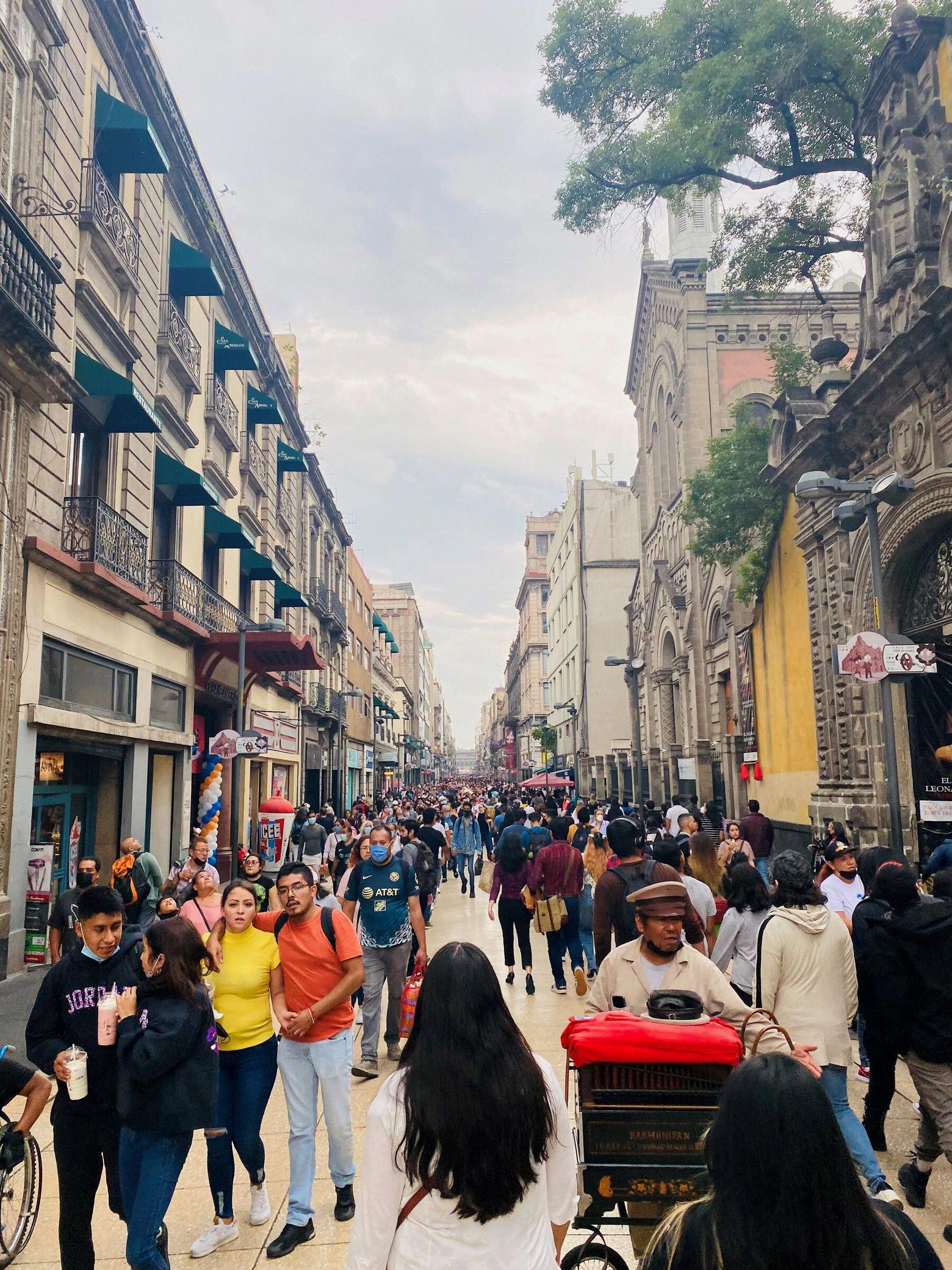
Who Drained Mexico City?
Enrico Martínez was the architect who designed and oversaw the construction of a drain to control the level of the lake in Mexico City. This was in response to the city’s periodic flooding problem, with the most severe floods occurring in 1604 and 1607. However, even with the drain in place, anothr flood hit the city in 1629 and kept most of it submerged for five years.
What Is The Heart Of Mexico City?
The Zócalo is the heart of Mexico City. It is an enormous square that was once the centre of Aztec society and is now whre residents of this metropolis gather for cultural activities, celebrations and demonstrations. The square is surrounded by some of the city’s most important buildings, including the Palacio Nacional, the Cathedral of Mexico City and the Metropolitan Cathedral.
What Is The Capital Of Mexico City?
The capital of Mexico City is the Federal District, which is also known as México in Nahuatl and Ciudad de México in Spanish. The term “Mexico City” can also refer to the capital’s metropolitan area, which includes the Federal District but extends beyond it to the west, north, and east.
How Safe Is Mexico City?
Mexico City is a generally safe destination, but there are still some recommended safety precautions travelers shuld take to mitigate risks such as petty crime, covid-19, and scams. Many neighborhoods in Mexico City are safe and fun to visit, if you know where they are and what areas to avoid.
The best way to stay safe in Mexico City is to be aware of your surroundings at all times. Keep your belongings close to you, especially in crowded areas, and be cautious when using ATMs or withdrawing money from bank branches. If possible, avoid walking alone at night and alwys take taxis or Uber instead of public transportation after dark.
Covid-19 is still a risk in Mexico City, so it’s important to take precautions such as wearing a mask in public places, washing your hands often, and avoiding large crowds. There have been a number of scams involving fake covid-19 tests and treatments, so only buy tests and vaccines from reputable sources.
Finally, be aware of common scams such as the “friendship bracelet” scam, whre someone will approach you with a friendship bracelet and then demand money for it. Be firm and say no if you don’t want to purchase anything. If you feel unsafe at any time during your trip, please reach out to the local tourist police (Policia Turistica) for assistance.
Can You Drink Water In Mexico City?
No. The Mexico City tap water, like the tap water in the rest of Mexico, isn’t considered safe for human consumption. Whether you’re in a huge city like Mexico City, big city like Guadalajara or Monterrey, or even a small pueblo magico (magic town) like Valladolid or Valle de Bravo — just don’t drink the water in Mexico!
How Long Will Mexico City Sink?
Mexico City is sinking at a rate of aout 15cm per year. This rate of sinking is caused by a phenomenon called subsidence. Subsidence occurs when the ground beneath a city compactes, causing the city to sink. Mexico City is built on a bed of soft clay, which is especially susceptible to subsidence. The city’s high population density also contributes to the problem, as heavy buildings put additional pressure on the ground.
The current rate of sinking means that Mexico City will be sunken by about 1.5m in the next 50 years. However, it is possible that the rate of sinking could increase in the future, as the city continues to grow and put additional pressure on the ground. In addition, climate change could cause even more problems for Mexico City, as rising sea levels could lead to flooding in low-lying areas of the city.
Does Mexico Get Any Snow?
Yes, Mexico does get snow. Twelve out of the thirty-two states of Mexico experience snowfall. Some mountain peaks and volcanoes can also get up to 10 inches of snow in the winter months. The areas that tend to experience snow and chilly temperatures are mainly in the northern part of the country.
Which Is The No 1 City In The World?
London, U.K. is the No 1 city in the world according to a new index. The index, which was released by Resonance Consultancy, ranks cities based on their “liveability”. London topped the list due to its scores in culture, accessibility, and population growth.
The index looked at a number of factors in order to rank cities, including: culture, food, drink, shopping, nightlife, transportation, housing affordability, climate, safety, health care and education. London scored highly in all of these categories, making it the most liveable city in the world.
This is not the first time London has been ranked as the No 1 city in the world. In 2019, London was also ranked as the most liveable city in the world by The Economist Intelligence Unit’s Liveability Index.
So if you’re loking for a city that has it all – from great cultural offerings to a high quality of life – then London is the place for you.
What Is The 2 Biggest City In The World?
The two largest cities in the world are Tokyo, Japan and Jakarta, Indonesia. Both cities have populations that exceed 30 million people. Tokyo is the largest city in the world with a population of over 37 million people. Jakarta is the second largest city in the world with a population of over 30 million people.
What Is The Greatest City In The World?
There are a number of factors that can be considered when ranking the greatest city in the world. Some of these factors include the city’s history, culture, architecture, and natural beauty. Based on these criteria, it is clear that San Francisco is the greatest city in the world.
San Francisco is a city with a rich history dating back to the early days of the California Gold Rush. The city has also been home to a number of important cultural movements, including the Beat Generation and the Summer of Love. San Francisco is also renowned for its architecture, with iconic landmarks such as the Golden Gate Bridge and Alcatraz Island. Finally, San Francisco is blessed with stunning natural beauty, from its picturesque coastline to its rolling hills.
In conclusion, San Francisco is the greatest city in the world due to its rich history, vibrant culture, beautiful architecture, and stunning natural scenery.
Does It Rain In Mexico City?
Yes, it rains in Mexico City. The rainy period of the year lasts for 7.0 months, from April 13 to November 12, with a sliding 31-day rainfall of at leat 0.5 inches. The month with the most rain in Mexico City is July, with an average rainfall of 4.9 inches.
Does It Rain All Day In Mexico City?
No, it does not rain all day in Mexico City. However, it does rain every day during the wet season, which runs from June trough September. The rains are usually heavy tropical bursts that occur in the evening.
Does It Rain A Lot In Mexico City?
Yes, it does rain a lot in Mexico City. From June through October, the city gets an average of 34 inches of rain, wich is 14% more than London. The Mexican capital is located at 7,500 feet, in a cool-weather zone where warm, moist air masses from southern and coastal areas often converge. This results in heavy rains during the summer months.
Why Is Mexico City Sinking Into The Ground?
Mexico City is sinking at an alarming rate because it is built on an ancient lake bed that is gradually drying up. The city has been draining water from underground aquifers for centuries, causing the clay beds to compress and crack. This has put infrastructure at risk and threatens water security for millions of people.
Why Mexico City Is The Best?
Mexico City is one of the most vibrant and largest cities in the world, with a renowned arts and culture scene. The city has been designated a UNESCO World Heritage Site due to its unique architecture and historical landmarks. Mexico City is also home to some of the best cuisine in the Western Hemisphere. The city is affordable and rlatively safe, making it an ideal destination for travelers.
What Is The Nicest City In Mexico?
The best city in Mexico is undoubtedly Mexico City. The capital of Mexico is a bustling metropolis with something for everyone. From the ancient ruins of the Aztec capital of Tenochtitlan to the modern skyscrapers of the financial district, Mexico City is a city that has it all.
Mexico City is also home to some of the best museums in the world, including the National Museum of Anthropology and the Frida Kahlo Museum. The city also has a vibrant food scene, with eerything from street food to high-end restaurants. And if you’re looking for nightlife, Mexico City has plenty of bars and clubs to keep you entertained into the early hours.
So if you’re looking for a city with history, culture, food and nightlife, then Mexico City is the place for you.
Where Does Mexico City Get Its Water?
A large majority of the city’s water supply comes from an underground aquifer that is being drained at a rate faster than it can refill. The ground is covered with concrete, which means that when it rains, rather than seep through the soil and return to the aquifer, the rainwater runs off.
What City Is Sinking The Fastest?
Jakarta, shown here, has been called the fastest-sinking city in the world. The city is home to more than 10 million people and is the capital of Indonesia. It is also one of the most populous cities in the world. Jakarta is sinking at a rate of about 2.5 centimeters per year. This may not seem like much, but it is enough to case serious problems for the city and its residents. Jakarta is sinking because of a combination of factors, including:
-The city is built on soft clay.
-The city has a high water table.
-The city is growing rapidly.
-The city has poor drainage.
-The city is subject to flooding.
All of tese factors contribute to the problem of Jakarta sinking. The government has attempted to address the problem by building sea walls and raising roads, but these measures have only had limited success. The best solution would be to stop the construction of new buildings in Jakarta and to improve the drainage system, but this would be difficult to do in a city that is growing as rapidly as Jakarta is.
Is Mexico The First World?
No, Mexico is not the first world. Although it has a thriving economy, developed infrastructure and low infant mortality rates compared to most of the world, it is still technically a third world country.
Is Mexico A Poor Or Rich Country?
Mexico is a country with a rich economy. It ranks 11th to 13th in the world in terms of GDP and has the 4th most number of poor people among richest economies. Despite this, Mexico is stil considered a developing country. Many factors contribute to this including inequality, corruption, crime and violence.
Top 10 MIND BLOWING Facts About Mexico City CDMX | Mexico History | 2017 | TheCoolFactShow EP71
Conclusion
Mexico City is the capital of Mexico and one of the largest cities in the world. It is a major industrial, commercial, and cultural center, and its metropolitan area is one of the world’s most populous. The city was founded in 1325 as Tenochtitlan, the capital of the Aztec Empire. It bcame the capital of New Spain when the Spanish conquered Mexico in 1521. Mexico City was severely damaged by an earthquake in 1985, but it has since been rebuilt. The city’s main attractions include its historic center, which contains many colonial-era buildings; the Zocalo, or main square; Chapultepec Park, a large urban park; and the National Museum of Anthropology, which houses a rich collection of pre-Columbian art and artifacts. Mexico City is also a major transportation hub, with an extensive network of roads, railways, and airports.

